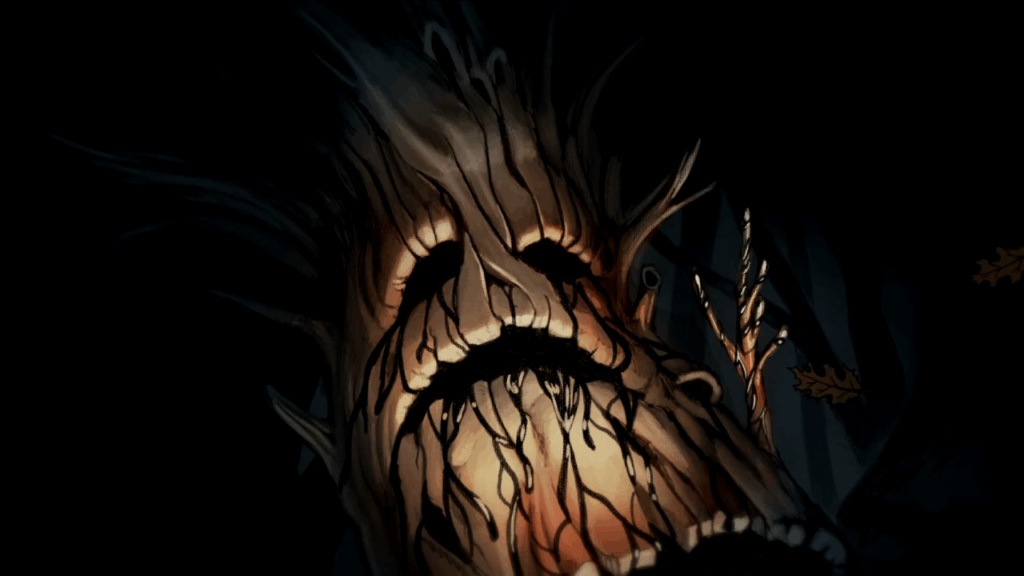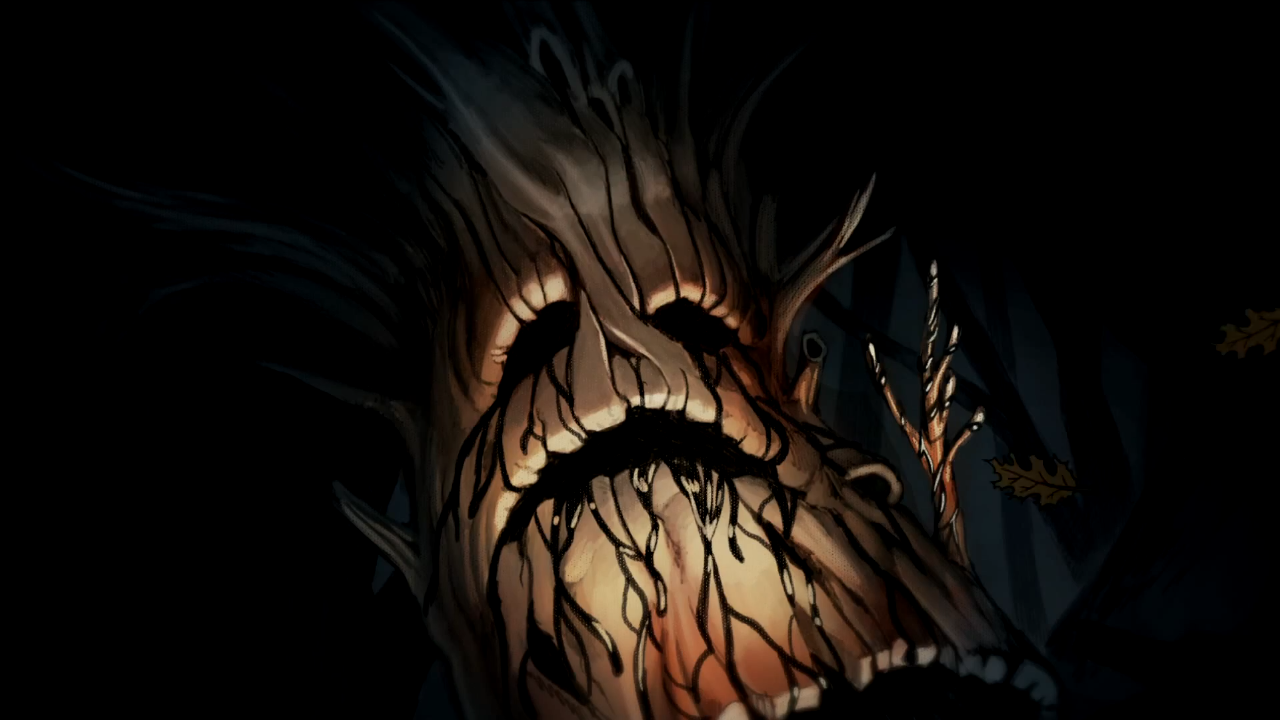
Decoding the Symbolism of Trees in Over the Garden Wall
Over the Garden Wall, Cartoon Network’s critically acclaimed miniseries, is a masterclass in visual storytelling and layered symbolism. While the narrative follows Wirt and Greg’s journey through the Unknown, a mysterious and often unsettling forest, the recurring motif of trees plays a crucial role in understanding the deeper themes of the show. From the ominous Dark Lantern to the seemingly benign apple orchard, trees are not merely background elements; they are integral to the narrative’s exploration of loss, fear, and the transition from childhood to adulthood. This article delves into the significance of trees in Over the Garden Wall, examining their various forms and the symbolic weight they carry.
The Forest as a Liminal Space
The Unknown itself is essentially a vast, sprawling forest. This setting immediately establishes a sense of disorientation and being lost, both literally and figuratively. Forests have long been associated with the unknown, the wild, and the untamed aspects of the human psyche. In Over the Garden Wall, the forest represents the liminal space between childhood and adulthood, a place where Wirt and Greg must confront their fears and learn to navigate the complexities of life. The density of the trees obscures the path forward, mirroring the uncertainty and confusion that often accompany significant life changes. The constant presence of the trees reinforces the idea that Wirt and Greg are trapped in this transitional phase, unable to fully return to their past or move forward into the future.
The Beast and the Dark Lantern
Perhaps the most prominent symbol involving trees is the Beast’s Dark Lantern. The lantern is fueled by the souls of children who have lost their way in the Unknown, and its light is kept burning by the oil of Edelwood trees. This connection between the Beast, the trees, and lost souls highlights the destructive power of fear and despair. The Edelwood trees, shrouded in darkness and associated with the Beast’s malevolence, represent the dangers of succumbing to negativity and losing hope. The Beast preys on the lost and vulnerable, luring them with false promises and trapping them in a cycle of fear, much like the suffocating embrace of a dense forest. The Dark Lantern, therefore, is a potent symbol of the corrupting influence of fear and the consequences of losing one’s way. The trees provide more than just fuel; they represent the very source of the Beast’s power.
Individual Trees as Symbolic Markers
Beyond the forest as a whole, individual trees often serve as symbolic markers within specific episodes. For example, in the episode “Old Grist Mill,” the ancient mill itself is built around a massive, gnarled tree. This tree represents the weight of history and the cyclical nature of time. The miller, Enoch, is trapped in a repetitive routine, grinding grain and reliving the past. The tree, as a silent witness to countless generations, embodies this sense of stagnation and the inability to escape the past. Similarly, in other episodes, specific trees might represent obstacles, challenges, or moments of realization for Wirt and Greg. The height of the trees often dwarfs the boys, emphasizing their smallness in the face of the unknown.
The Apple Orchard: A False Sense of Security
The apple orchard, encountered in the episode “Mad Love,” initially appears as a haven of safety and abundance. However, beneath the surface lies a sinister truth. The orchard is controlled by Auntie Whispers, a seemingly benevolent woman who is actually exploiting the children to harvest the apples. The abundance of fruit, a symbol of nourishment and life, is ultimately tainted by Auntie Whispers’ manipulative nature. The trees in the orchard, while bearing fruit, are also symbols of entrapment. The children are forced to work endlessly, trapped in a cycle of labor and dependence. This episode highlights the dangers of blindly accepting appearances and the importance of questioning authority. The trees, laden with apples, mask the underlying exploitation, creating a false sense of security.
Trees and the Passage of Time
Throughout Over the Garden Wall, the changing seasons and the life cycle of trees subtly underscore the passage of time. The miniseries takes place during the autumn, a season of transition and decay. The falling leaves and the bare branches of the trees symbolize the fading of childhood and the approach of maturity. The trees, in their autumnal state, remind us of the impermanence of life and the inevitability of change. As Wirt and Greg navigate the Unknown, they are forced to confront the realities of loss and the need to adapt to new circumstances. The trees, as silent witnesses to their journey, serve as a constant reminder of the passage of time and the transformative power of experience. The very nature of the trees, growing, dying, and regenerating, mirrors the cycle of life and death that Wirt and Greg are grappling with.
The Tree as a Symbol of Connection and Roots
While trees often represent fear and the unknown in Over the Garden Wall, they can also symbolize connection and roots. Wirt’s desire to return home and his longing for a sense of belonging are reflected in the imagery of trees. The idea of having strong roots, both literally and figuratively, is essential for navigating the challenges of life. The trees, with their deep roots anchoring them to the earth, represent stability and resilience. Wirt’s journey through the Unknown is ultimately a quest to find his own roots and to establish a stronger sense of identity. [See also: Over the Garden Wall Characters Analysis] He learns to value his relationships with his family and friends and to appreciate the importance of having a place to call home. The trees, in this context, symbolize the enduring power of connection and the importance of staying grounded in one’s values.
Conclusion: The Enduring Symbolism of Trees
In conclusion, the trees in Over the Garden Wall are far more than just scenic backdrop. They are powerful symbols that contribute to the show’s rich tapestry of meaning. From the ominous Dark Lantern to the deceptively idyllic apple orchard, trees represent a wide range of themes, including fear, loss, transition, and connection. By carefully analyzing the symbolism of trees, we can gain a deeper understanding of the show’s complex narrative and its exploration of the human condition. The trees stand as constant reminders of the challenges and opportunities that lie ahead, urging us to embrace the unknown and to find our own way through the metaphorical forest of life. The enduring presence of trees in Over the Garden Wall ensures that the show’s themes will continue to resonate with audiences for years to come. The layered symbolism surrounding the trees makes the show a piece of art that can be interpreted in many different ways. Looking closely at the trees will provide a fresh perspective into the already complex story.

